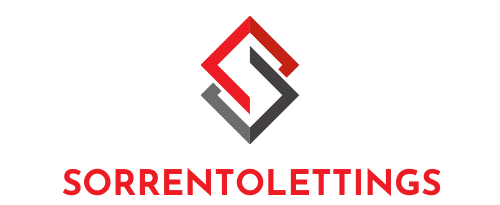What’s the Latest in Adaptive Learning Technology for Children with Dyslexia?

Dyslexia is not an uncommon condition. In fact, approximately one in five children is affected by it. This learning disability can pose significant challenges when it comes to reading, writing, and comprehension. However, with the constant evolution of technology, new tools are being developed to provide support and assistance to children with dyslexia. Let’s take a look at some of the latest advancements in adaptive learning technology for dyslexia.
Assistive Technologies for Reading and Beyond
Assistive technologies have been a game changer in providing access to education for students with dyslexia. They are designed to help children overcome their learning disabilities, offering support in reading text and comprehending its meaning.
Sujet a lire : How Can Precision Farming Reduce Nitrate Runoff in the UK’s Agricultural Lands?
Among the many tools available today, text-to-speech software has emerged as a prominent aid. This technology allows students to listen to the text instead of struggling to read it, thus improving comprehension. Text-to-speech programs come with adjustable speeds and voice options, catering to individual needs and preferences.
Screen-reading tools are another powerful assistive technology. These programs convert graphical information into understandable text, making it easier for children with dyslexia to interpret and comprehend data. Screen readers can also be customized to suit the user’s specific needs, providing a more personalized learning experience.
A lire aussi : What Are the Latest Innovations in Electric Vehicle Charging Infrastructure?
Digital Tools to Support Learning
Technology has given birth to a new generation of digital tools, designed specifically to support students with dyslexia in their learning journey. These tools utilize a multitude of features, such as interactive exercises, games, and quizzes, to make learning more engaging and effective.
For instance, there are apps that help children with dyslexia improve their reading skills by allowing them to practice at their own pace. They use engaging graphics and interactive elements to maintain the child’s interest and make the learning process less daunting.
Another interesting development is the advent of e-books with adaptive text. These books can adjust the font, size, and color of the text to make reading easier for children with dyslexia. They also provide audio support, enabling the child to listen to the text while following along visually. This multisensory approach not only aids in reading but also enhances comprehension and retention.
Dyslexia-Friendly Computer Interfaces
There has been a significant move towards designing computer interfaces that are more accommodating for people with dyslexia. These special interfaces aim to minimize visual stress and improve readability, thereby helping students with dyslexia navigate the digital world with ease.
One such technology is overlay software, which applies a colored tint to the computer screen. Research has shown that certain colors can reduce visual stress and increase reading speed for people with dyslexia. This software allows users to choose a color that suits their visual comfort, making reading on the screen more manageable.
In addition, there are web browsers designed with dyslexia-friendly settings. These browsers feature fonts and color schemes that are easier on the eyes, and they eliminate distracting elements to improve focus. They also offer a reading mode that declutters the webpage and highlights the text, making online reading a much more pleasant experience for children with dyslexia.
Graphical Technologies for Visual Learning
Graphical technologies are another powerful tool in enhancing learning for students with dyslexia. They convert complex information into visual forms, making it easier for children to understand and retain the material.
Infographics, diagrams, and mind maps are just some examples of graphical tools that can be employed to aid learning. These tools can simplify complex concepts and present them in a more digestible manner, helping children with dyslexia grasp the information more effectively.
Interactive whiteboards are another example of graphical technology that can benefit children with dyslexia. These whiteboards allow teachers to present information in a dynamic, visual format, engaging students and improving learning outcomes. They also enable students to interact with the material, thus promoting active learning and deeper understanding.
Personalized Learning Paths with Adaptive Learning Systems
Adaptive learning systems are a major breakthrough in education technology. These systems use artificial intelligence to adapt the learning path based on the student’s performance and learning style.
For children with dyslexia, adaptive learning systems can provide a highly personalized learning experience. They can adjust the difficulty level of the content, provide immediate feedback, and offer tailored recommendations to enhance learning. Moreover, they can track the child’s progress and identify areas of strength and weakness, allowing for a more targeted approach to learning.
In conclusion, technology has indeed come a long way in supporting children with dyslexia in their educational journey. The latest advancements in adaptive learning technology are not only aiding these children in overcoming their learning challenges but also empowering them to realize their full potential.
Combating Learning Disabilities with Virtual Reality (VR) and Augmented Reality (AR)
Virtual reality (VR) and augmented reality (AR) are emerging as fantastic tools in the realm of assistive technology for children with dyslexia. These immersive technologies strive to enhance learning activities by creating engaging and interactive 3D environments.
Virtual reality, which transports users into computer-generated environments, has been used to create immersive reading experiences. The 3D environment can mimic real-life settings, like a forest or a castle, which can make the reading activity more engaging for dyslexic students. For instance, as students read about a story set in a forest, they are visually immersed in a forest environment, enhancing their connection with the text. This virtual reality immersion can transform reading from being a challenging task to an enjoyable adventure.
On the other hand, augmented reality overlays digital elements onto the real world. AR applications can augment texts with interactive elements, such as animations or 3D models, to provide a multisensory learning experience. For example, while reading a biology text, an AR app can bring a 3D model of a cell to life, helping children with learning disabilities like dyslexia better understand and retain complex concepts.
Moreover, VR and AR can be used for creating simulations and role-playing scenarios that can help with reading, writing, and comprehension. By actively participating in these scenarios, students with dyslexia can practice and improve their language skills in a supportive and engaging environment.
Empowering Dyslexic Students with Artificial Intelligence (AI)
Artificial intelligence (AI) is revolutionizing special education for children with dyslexia. AI-driven tools are designed to help with learning disabilities by providing personalized support and real-time feedback.
One popular AI tool is intelligent tutoring systems. These systems can adapt to a student’s learning pace and style, offering personalized tutoring sessions. They can detect when a student is struggling with a concept and provide additional explanations or exercises to help with understanding. This responsiveness can make learning a more positive and less frustrating experience for dyslexic students.
Speech recognition software is another AI tool that can dramatically help with reading and writing tasks. This software can transcribe spoken words into written text, easing the burden of writing for students with dyslexia. It can also read out written text, catering to students who learn better through listening.
AI can also analyze students’ performance data to predict and prevent learning difficulties. By identifying patterns in a student’s performance, AI can anticipate areas where a student might struggle and recommend targeted interventions. This predictive analysis can help in devising more effective learning strategies for children with dyslexia.
Conclusion: Embracing Technology for Dyslexia
In a nutshell, technology is playing a formidable role in transforming the educational journey of children with dyslexia. The latest advancements in adaptive learning technology, like assistive technologies, digital tools, dyslexia-friendly computer interfaces, graphical technologies, VR, AR, and AI, are proving to be powerful allies in combating learning disabilities.
These technologies not only help students with dyslexia overcome their difficulties with reading, writing, and comprehension but also empower them by making learning more engaging, personalized, and accessible. They are progressively breaking down the barriers that dyslexia poses to learning and opening up a world of possibilities for children with this learning disability.
As technology continues to advance and evolve, the future of special education for children with dyslexia looks brighter and more promising than ever. The key lies in adopting these technologies and integrating them into the learning environments, ensuring that every child, irrespective of their learning challenges, can enjoy the process of learning and achieve their full potential.
